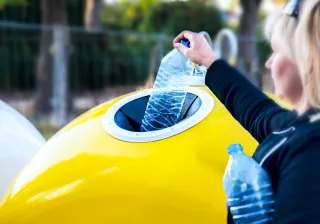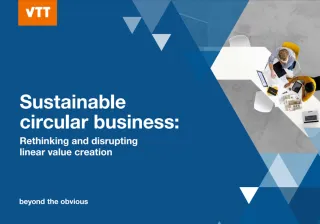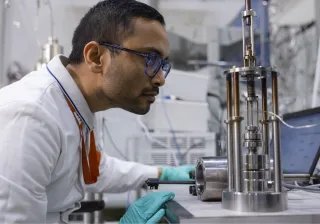Oil and gas exploration to identify potentially resource rich locations is a costly, time-consuming and environmentally challenging process. VTT is supporting TOTAL in the development of drone deployable seismic sensor technology called EcoDART which in the future could replace conventional geophones for land seismic acquisition. This project includes the use of printed and hybrid electronics, as well as biodegradable plastic materials to minimize the environmental footprint of the seismic sensors.
Facts and figures
Smaller ecological footprint, significantly reduced safety risks and a lower cost of exploration in hard-to-reach areas thanks to the use of EcoDART sensors
Substantially lowered environmental impact of operations ensured by the biodegradability of EcoDART
High potential for future use – the developed solutions might be a green revolution for commonly used electronic devices
These next generation sensors are part of TOTAL’s innovative geophysical method called METIS® where hundreds of seismic sensors are dropped by drones in high-density grids over difficult-to-access terrain such as jungles or foothills. Small seismic sources (such as vibrating trucks or small explosive charges buried in the ground) are used to produce waves, which reflect in the subsurface when the geology changes, and are eventually measured by the sensors laid out on the ground. Complex algorithms are then able to process the recorded data and create a 2D or 3D image of the underground which can in turn be interpreted to identify suitable locations for drilling sites. Deploying the sensors automatically from the air, in comparison to conventional land-based seismic acquisition surveys, provides a way of significantly decreasing the number of people sent out to the field, lowering the environmental impact and HSE footprint accordingly.
New generations of plastics and electronics
Since drone-deployed seismic sensors are difficult to retrieve from challenging terrain, they are designed to remain in the field after use. VTT is collaborating with TOTAL on new materials and printed electronics for the seismic sensors which will biodegrade in a defined timeframe after the sensor has reached the end of its life cycle.
VTT’s has developed extensive process and materials know-how in printed and hybrid electronics over the past 15+ years. Currently VTT hosts the largest roll-to-roll (R2R) pilot manufacturing infrastructure worldwide for printed electronics at its site in Oulu, Finland. VTT’s expertise and facilities are both valuable assets in making the challenging EcoDART project a success in the next couple of years.
From exploration to everyday use
One of the key drivers for the cooperation between VTT and TOTAL, a pioneer in drone-based oil and gas exploration, is the project’s sustainability vision. An additional benefit of this collaboration is finding other potential applications for biodegradable electronics and plastics, such as earthquake monitoring. Sensors dropped near active volcanos, in locations too dangerous for humans to access, could survive the demanding surroundings and at the same time detect early tremors. This could help with volcanic crisis risk management and assist emergency planners in safe evacuation of residential areas.
Research in biodegradable electronics is currently one of the R&D focus areas at VTT. Many every-day products are designed for single-use and thrown away once they have fulfilled their purpose. A prominent example of single-use electronics are digital pregnancy tests. Consisting of a plastic housing, an ordinary battery, a glass-encapsulated LCD display and a conventional circuit board, these tests pose a huge potential for making them more sustainable by using printed and hybrid electronics in manufacturing.







